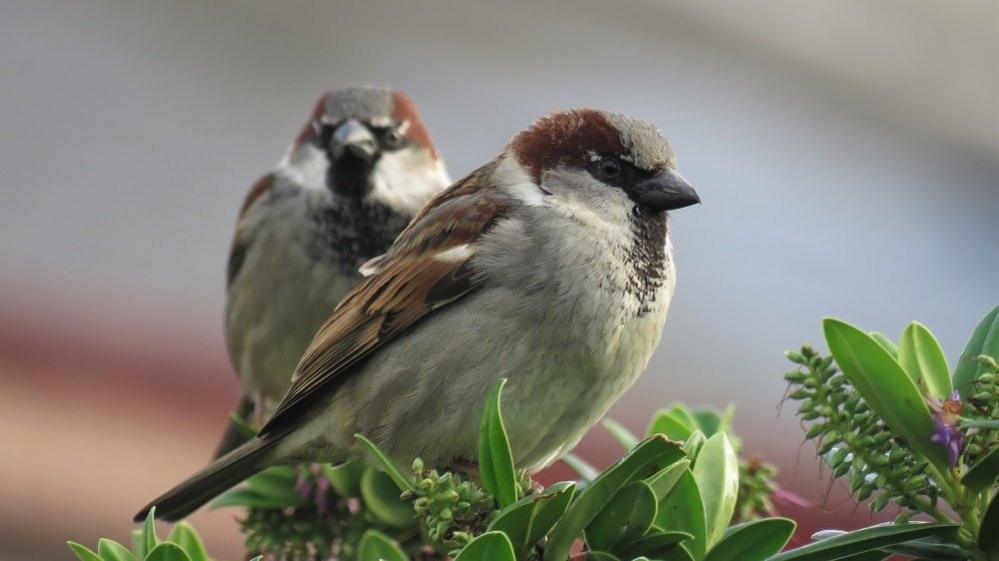Bird watching: The robin that thinks a cuckoo is its baby
- Published
Robin shares food with cuckoo
They say birds of a feather flock together, but what are the chances of a robin and cuckoo sharing a bit of lunch?
Well, County Donegal woman Maureen Carr captured the moment a red-breasted bird shared its meal.
Maureen, from Kilcar, said she first noticed the cuckoo as she was sitting at her table on a Saturday morning.
"We have a bird feeder, like most people," she said.
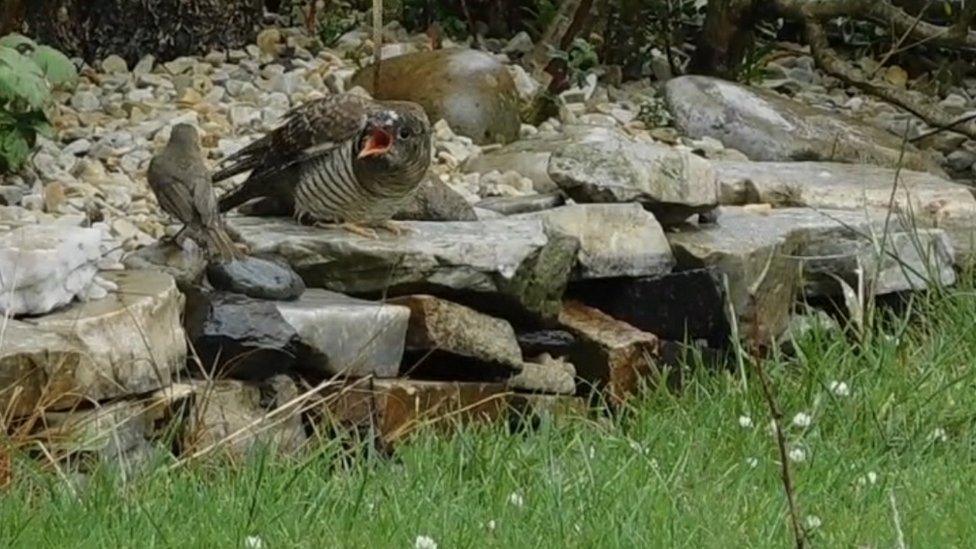
The robin had been flying back and forward to feed the cuckoo
"We noticed the big bird at the bottom of the garden and, at first, we thought it must have been a sparrow hawk, but we realised it wasn't when the wee birds weren't afraid of it.
"It was then that we noticed the robin kept going back to different spots round the garden and was actually feeding it [the cuckoo]."
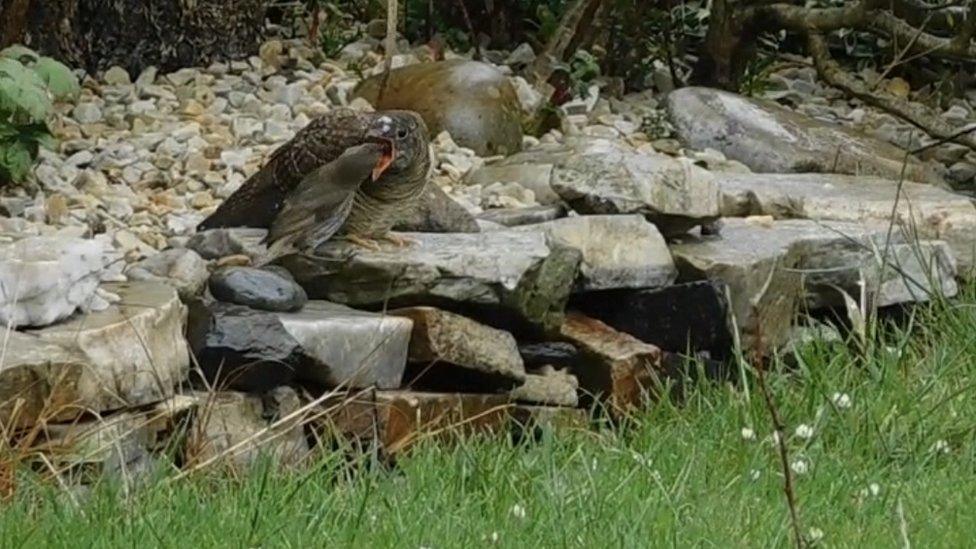
Maureen captured the video at the end of June
Maureen took a few photos of the bird and uploaded them to a site where she was able to get guidance and find out it was a cuckoo.
She subsequently captured the feeding in action.
"The louder the cuckoo got, the more we knew the robin would come back and eventually it did," she said.
Cuckoos are more common in the Republic of Ireland, but are on a conservation red list in the UK, where there are thought to be just 18,000 pairs, according to the Royal Society for the Protection of Birds (RSPB).
In their natural environment, they are often heard, but sightings tend to be more infrequent.
They are not garden birds and it's more unusual for cuckoos to use a robin's nest - but not unknown, the RSPB said.
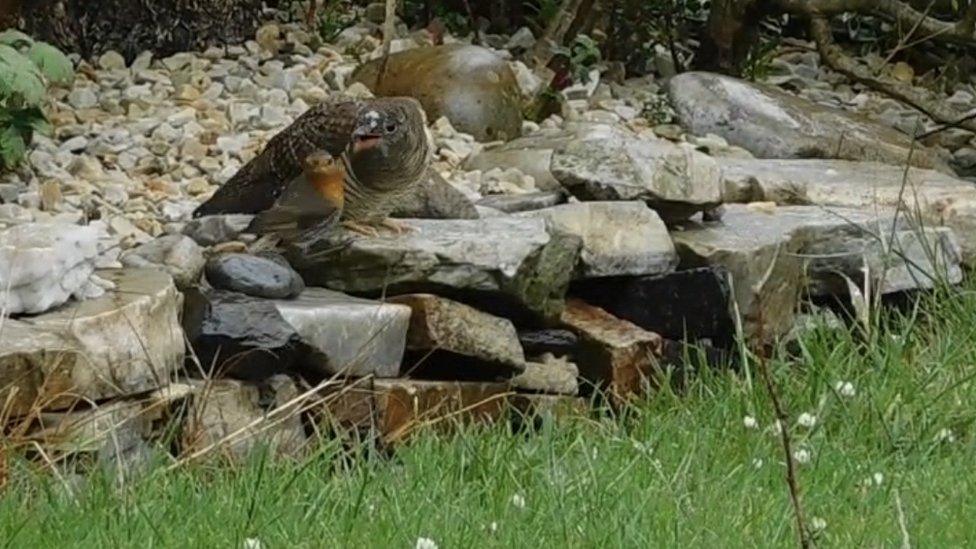
The birds have since moved on for the summer
The RSPB said that cuckoos will often lay their eggs in the nest of a bird that is similar to the one that raised them - so there's a chance the mother of the Kilcar cuckoo was also raised by a robin.
Anne-Marie McDevitt, of the RSPB, said it was likely the robin thought the cuckoo was one of its own young.
"Cuckoos nest in heathland, wet grassland and scrub - and need a good supply of big, hairy moth caterpillars," she said.
"The most commonly cited birds which they parasitise seem to be meadow pipits, dunnocks and reed warblers."
She said cuckoos have a "crafty breeding strategy".
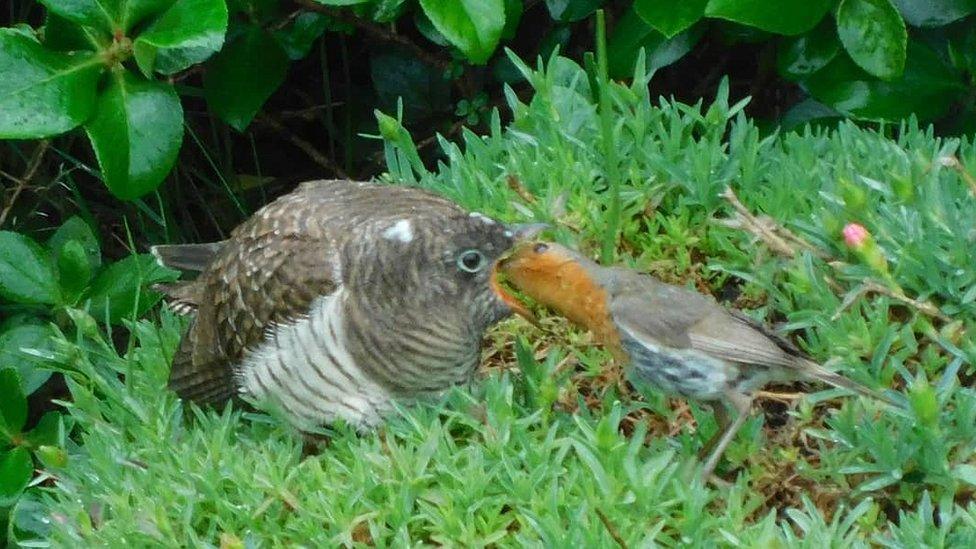
Cuckoos hatch their eggs in other birds' nests
"Instead of building their own nest, they use the nests of 'host' birds, such as dunnocks and meadow pipits. When a female cuckoo finds a suitable nest, and the hosts aren't looking, she removes one of their eggs and lays her own egg in its place.
"The young cuckoo hatches after only 12 days and quickly pushes the hosts' eggs or babies out of the nest. After 19 days it leaves the nest, but the hosts continue to feed it for two more weeks, by which time it has grown much bigger than them."
But what of the robin in the County Donegal garden?
"I've been leaving wee bits and pieces out for the robin, the poor wee thing was probably starving trying to feed the cuckoo," Maureen said.
"I think everyone was taking more of an interest on what was going on on their own doorstep during lockdown, it's amazing what you see when you actually look."
- Published2 April 2020
